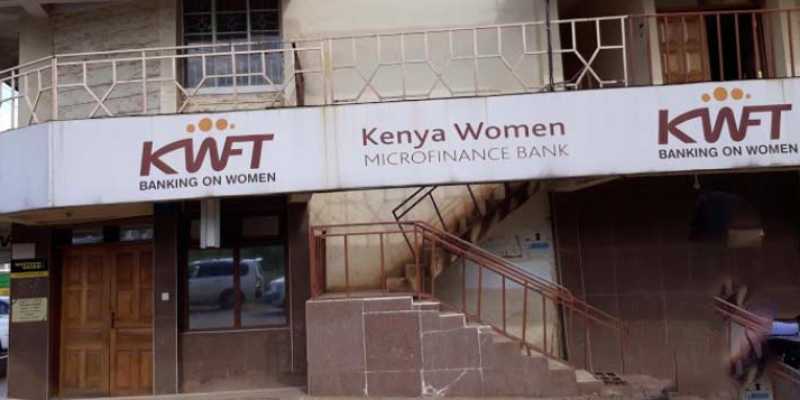Microfinance banks in Kenya have been pivotal in driving financial inclusion by providing essential financial services to low-income individuals, small entrepreneurs, and the unbanked population. These institutions are licensed by the Central Bank of Kenya (CBK) and are designed to bridge the gap for those who cannot access traditional banking services, offering products such as loans, savings, insurance, and money transfer services.
As of 2024, there are 14 licensed microfinance banks in Kenya, all of which have played an instrumental role in expanding access to financial services, especially in rural and underserved areas. This article provides a detailed list of these microfinance banks, their licensing dates, and highlights their contributions to Kenya’s economic growth.
What Are Microfinance Banks?
Microfinance banks are financial institutions that focus on providing small-scale financial services to underserved communities. Unlike traditional commercial banks, they specialize in offering financial products tailored to low-income clients who are typically excluded from formal banking systems. The services provided include:
- Micro-loans: Small loans to support small business operations.
- Savings accounts: Secure places for clients to save their earnings.
- Insurance products: Affordable insurance solutions for health, business, and life.
- Money transfers and remittances: Convenient ways for clients to send and receive money locally and internationally.
Microfinance banks are a vital part of Kenya’s financial ecosystem, as they empower small and medium-sized enterprises (SMEs) and entrepreneurs, creating job opportunities and driving economic growth. They complement, rather than compete with, traditional commercial banks, making financial services accessible to millions of Kenyans.
Licensed Microfinance Banks in Kenya (2024)
Below is the updated list of licensed microfinance banks in Kenya as of 2024, alongside their licensing dates.
| Microfinance Bank | Date Licensed |
|---|---|
| 1. Caritas Microfinance Bank Limited | 2nd June 2015 |
| 2. Branch Microfinance Bank Limited | 17th September 2012 |
| 3. Choice Microfinance Bank Limited | 13th May 2015 |
| 4. Umba Microfinance Bank Limited | 12th January 2015 |
| 5. Faulu Microfinance Bank Limited | 21st May 2009 |
| 6. Kenya Women Microfinance Bank Limited | 31st March 2010 |
| 7. Rafiki Microfinance Bank Limited | 14th June 2011 |
| 8. LOLC Kenya Microfinance Bank Limited | 31st December 2010 |
| 9. SMEP Microfinance Bank Limited | 14th December 2010 |
| 10. Sumac Microfinance Bank Limited | 29th October 2012 |
| 11. U & I Microfinance Bank Limited | 8th April 2013 |
| 12. Salaam Microfinance Bank Limited | 8th November 2010 |
| 13. On It Microfinance Bank Limited (formerly Maisha Microfinance Bank Ltd) | 21st May 2016 |
| 14. Muungano Microfinance Bank PLC | 30th October 2019 |
Key Players in Kenya’s Microfinance Sector
- Faulu Microfinance Bank
Established in 2009, Faulu was the first microfinance institution in Kenya to transition into a fully-fledged microfinance bank. It provides a wide range of financial services, including business loans, group savings, and insurance products. It has gained popularity for its deep reach in rural areas, empowering smallholder farmers and entrepreneurs. - Kenya Women Microfinance Bank (KWFT)
Founded to provide financial services to women, KWFT has grown into one of the most successful microfinance banks in the country. The institution focuses on promoting women’s economic empowerment by offering loans, savings accounts, and insurance services tailored to their needs. Today, KWFT serves both women and men, though women remain its primary focus. - Rafiki Microfinance Bank
Rafiki stands out for its innovation in digital banking, allowing customers to access loans and other services through mobile banking platforms. Its commitment to offering quick, accessible financial solutions makes it a favorite among small and medium-sized business owners. - Branch Microfinance Bank
Branch is a digital-first microfinance bank that focuses on mobile lending. Its unique model uses smartphone technology to assess customers’ creditworthiness and offer instant loans. Branch has revolutionized access to credit for many Kenyans, offering an easy and fast alternative to traditional loan applications. - Muungano Microfinance Bank
Licensed in 2019, Muungano is one of the newest entrants in the sector. The bank focuses on offering financial services to the underserved urban and peri-urban populations, particularly informal workers and SMEs.
Role of the Central Bank of Kenya
The Central Bank of Kenya plays a crucial role in regulating microfinance institutions to ensure they adhere to strict financial and operational standards. By licensing and supervising these institutions, the CBK ensures that microfinance banks are financially stable and able to serve their customers responsibly. This regulatory oversight helps protect depositors and promotes trust in the microfinance sector.
How Microfinance Banks Support Kenya’s Economy
Microfinance banks are critical drivers of economic development in Kenya for the following reasons:
- Financial Inclusion: By targeting low-income earners and SMEs, microfinance banks enable more people to participate in the formal financial system.
- Job Creation: The financial support offered to entrepreneurs and small business owners helps them grow their businesses, creating job opportunities.
- Poverty Alleviation: Access to affordable loans and savings products helps individuals improve their financial stability and escape poverty.
Challenges Facing Microfinance Banks
While microfinance banks have had a positive impact on Kenya’s economy, they also face several challenges, including:
- High Default Rates: Due to the nature of micro-lending, where borrowers may not have stable incomes, microfinance banks often face higher default rates compared to traditional banks.
- Competition from Mobile Lending Platforms: The rise of mobile lending platforms like Tala and Branch has introduced competition in the microfinance space, pushing traditional microfinance banks to innovate.
- Regulatory Compliance: Adhering to CBK’s regulations can be challenging for smaller microfinance institutions, especially those with limited resources.
Microfinance banks in Kenya continue to play a vital role in providing financial services to the unbanked and underbanked segments of society. Their ability to offer micro-loans, savings products, and other financial services makes them indispensable in promoting financial inclusion and supporting small-scale entrepreneurs.
As the microfinance sector continues to grow, new digital technologies and innovations are likely to further enhance the accessibility and convenience of financial services for Kenyans. The Central Bank of Kenya’s continued regulatory oversight will ensure that microfinance institutions remain a trustworthy option for the millions of people relying on them for their financial needs.
For individuals or businesses looking to take advantage of the services offered by microfinance banks, the institutions listed above provide an excellent starting point. Whether you need access to small business loans, savings accounts, or insurance products, Kenya’s microfinance banks have the resources to help you achieve your financial goals.





